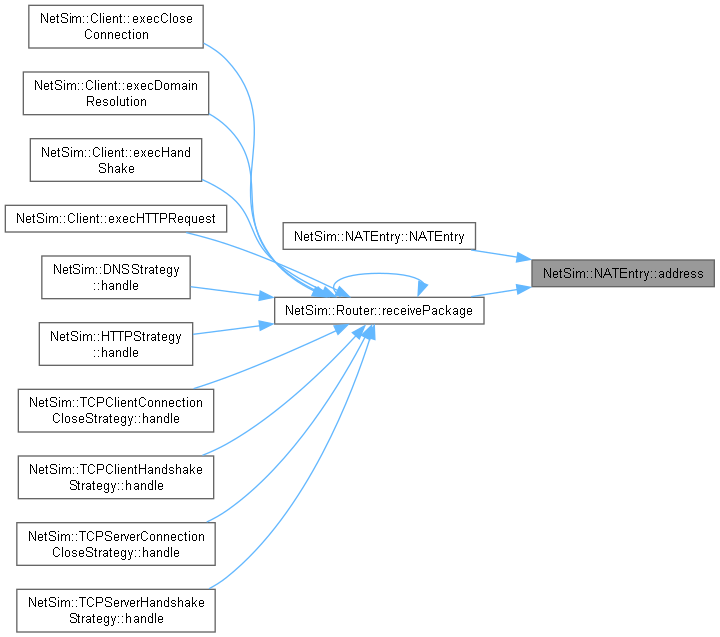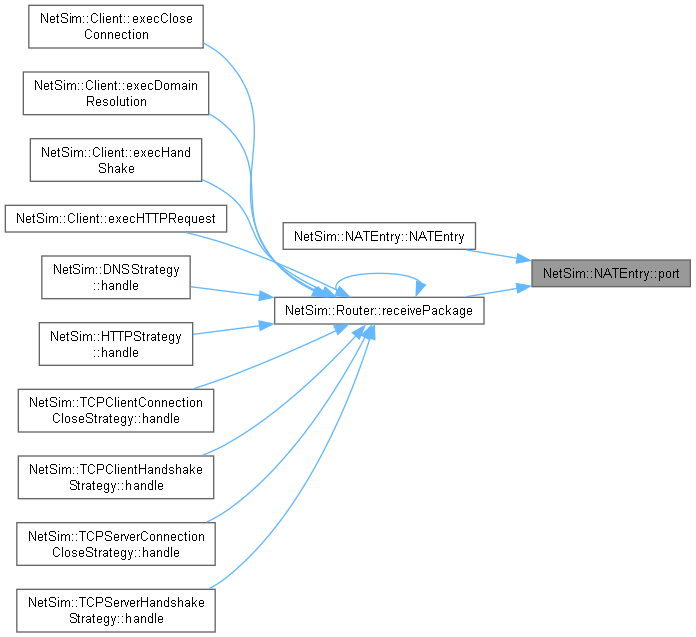|
NetSim 1.0.0
An educational network simulation software for students
|
Loading...
Searching...
No Matches
|
NetSim 1.0.0
An educational network simulation software for students
|
Represents an entry in the NAT table with an IP address and associated port. More...
#include <natentry.h>
Public Member Functions | |
| NATEntry (const IPAddress &address, const Port &port) | |
| Constructs a NATEntry with a specified IP address and port. | |
| NATEntry ()=default | |
| Default constructor. | |
| Port | port () const |
| Retrieves the port associated with this NAT entry. | |
| IPAddress | address () const |
| Retrieves the IP address associated with this NAT entry. | |
| bool | operator< (const NATEntry &entry) const |
| Compares two NAT entries based on their port numbers. | |
Represents an entry in the NAT table with an IP address and associated port.
The NATEntry class is a data structure representing a NAT table entry. It associates an IP address with a specific port and provides utility functions to access and compare them.
Constructs a NATEntry with a specified IP address and port.
| address | The IP address associated with this NAT entry. |
| port | The port associated with this NAT entry. |

|
default |
Default constructor.
| IPAddress NATEntry::address | ( | ) | const |
Retrieves the IP address associated with this NAT entry.

| bool NATEntry::operator< | ( | const NATEntry & | entry | ) | const |
Compares two NAT entries based on their port numbers.
| entry | The NAT entry to compare with. |

| Port NATEntry::port | ( | ) | const |
Retrieves the port associated with this NAT entry.
